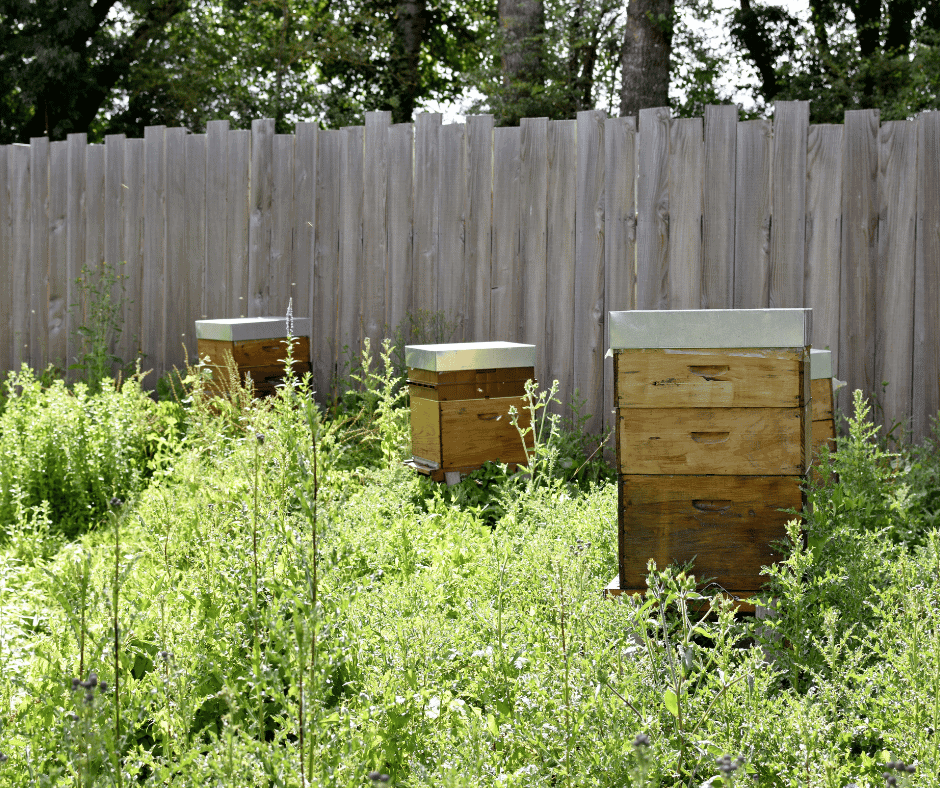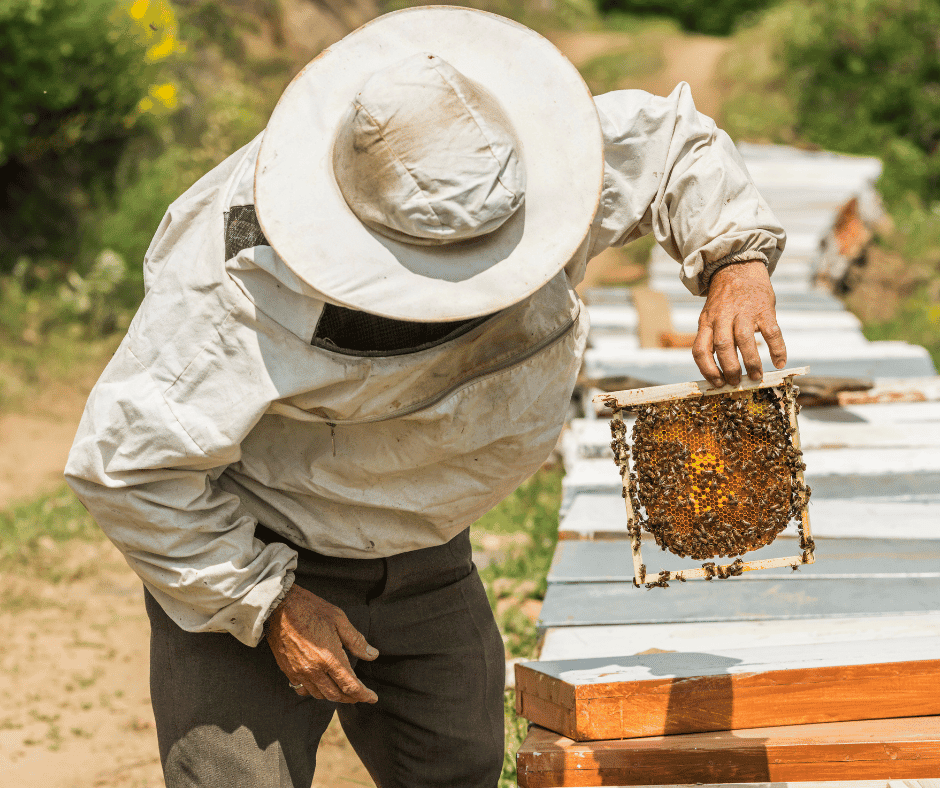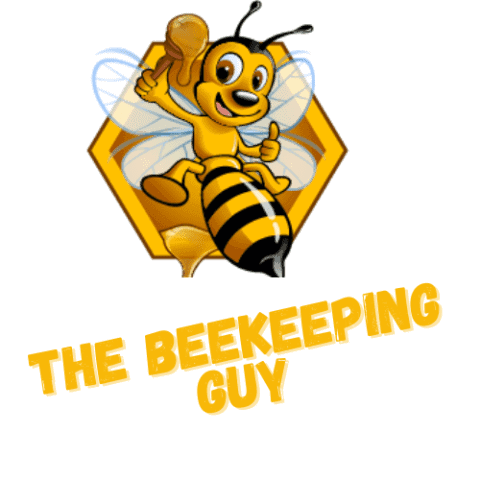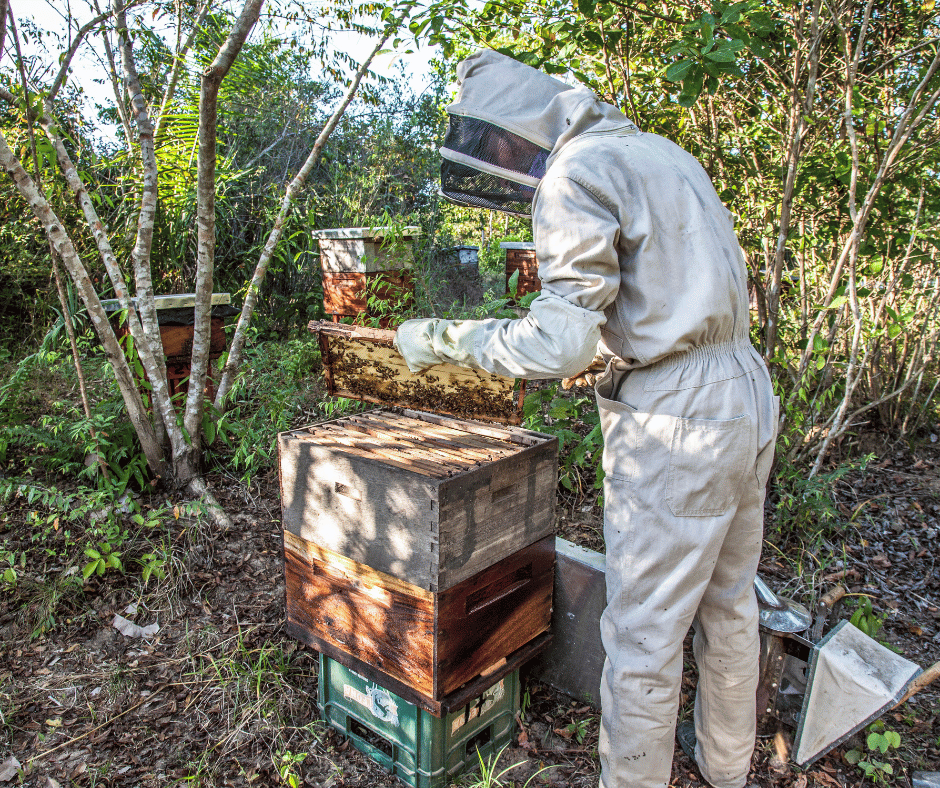
Are you looking for an alternative to conventional beekeeping methods? Natural Beekeeping is the answer! This revolutionary technique has revolutionized the world of apiculture, offering a more sustainable and eco-friendly way of tending to bees.
Imagine being able to nurture your hive with minimal intervention while still ensuring that the health and well-being of the colony are maintained – this is what natural beekeeping can offer!
In this article, we’ll explore precisely what makes it so unique and why it’s quickly becoming one of the most popular forms of beekeeping around. So, if you’re keen to learn more about how you can be part of this exciting new trend, read on!
Table of Contents
Definition
Natural beekeeping is an approach to keeping honeybees in which the beekeeper works with nature, rather than against it. It’s also a way of life for many natural beekeepers who seek to create healthy, sustainable habitats for their bees that are free from chemical treatments or other unnatural interventions.
Natural beekeepers strive to keep their hives as close to their wild counterparts as possible by using organic practices and materials. A natural beekeeper may opt for woodenware instead of plastic foundation in their hive boxes, and favor native plants over non-natives when selecting nectar sources.

In essence, natural beekeeping puts more emphasis on designing apiaries around what’s best for the bees while still providing them with necessary resources. This means leveraging things like good airflow through well-spaced hives and plenty of diverse flowers in the vicinity.
Keeping track of pests, diseases, genetics, and nutrition levels all play into how successful a natural beekeeper can be at achieving those goals. By understanding these components and fostering strong relationships between the human caretaker and its charges, we can create thriving colonies of healthy honeybees – just like they do in nature!
This holistic approach helps ensure our honeybee populations stay healthy and resilient long into the future – something every natural beekeeper should strive towards.
Video on A Natural Beekeeper’s Approach to Modern Apiculture
History
Ironically, it wasn’t until recently that natural beekeeping became popular. For centuries, beekeepers had been using industrialized methods to manage their bees and hives – often with less-than-ideal results. In the early 2000s, a growing number of people began to look for alternative approaches to honey production, which led to an increased interest in natural beekeeping.
Natural bee hives are designed to mimic the structure of wild beehives, allowing bees to live as close as possible to how they would naturally exist in nature. The goal is to create an environment where both the colony and human caregivers can thrive simultaneously.
In recent years, this movement has gained traction among hobbyists and commercial apiarists alike who have seen first-hand the benefits of utilizing these techniques when managing their own operations.
Without relying heavily on external inputs like treatments or other chemicals, many natural beekeepers find that their colonies are healthier overall – leading to better quality honey yields and more successful pollination efforts.
Benefits Of Natural Beekeeping
Natural beekeeping offers many advantages over traditional forms of beekeeping. It is a more sustainable and environmentally friendly way to keep bees, while still providing the same benefits. Here are some of the main benefits:
- Natural beehives provide improved air circulation which helps protect against disease and pests.
- The use of natural hives also reduces stress on the bees, helping them better survive in their environment.
- Finally, natural beekeeping uses fewer resources than other methods, making it an eco-friendly option for keeping bees.
Aside from these environmental factors, there are social and economic reasons to engage in natural beekeeping as well. As more people become aware of the importance of preserving our ecological systems, they are increasingly turning towards natural beekeeping practices for their honey production needs.

By using less energy to produce their product and by creating healthier environments for their colonies, beekeepers can save money in the long run while simultaneously doing good for nature.
Furthermore, local communities benefit greatly when citizens make an effort to preserve pollinators such as wild bees through natural beekeeping techniques.
The next step is learning what equipment is needed for this type of activity — a topic we will explore further shortly!
Equipment Needed For Natural Beekeeping

If you’re a natural beekeeper, there’s no need to worry about the complicated equipment and tools usually associated with beekeeping. All you need is a few basic items that are readily available in any hardware store! A hat, smoker, hive tool, protective clothing, gloves, veil, and of course some bees – they’re all necessary for successful natural beekeeping.
The most important piece of equipment needed is a good quality hat which should provide protection against stings as well as shading your eyes from sun glare.
Smokers help calm the bees and make them easier to work with while hive tools allow you to open up the hive without damaging it or disturbing the insects inside.
Protective clothing such as overalls and gloves will protect you from being stung by unruly bees.
Lastly, don’t forget to get yourself a sturdy veil so that you can see clearly what’s going on whilst staying protected.
To ensure success when starting out in natural beekeeping, it’s essential to have these pieces of equipment ready before attempting anything else. Now that we’ve got everything sorted out let’s move on to finding a suitable location for the hive!
Finding A Suitable Location For The Hive
Now that you have the proper equipment and knowledge to maintain a natural bee hive, it’s time to find an ideal location for your new home. When scouting out potential spots, there are several factors that should be taken into consideration in order to ensure the health of your bees as well as maximize their honey production.
It must also be placed away from busy roads, trees, and other hives, (in case yours aren’t already isolated) – this will help minimize stress levels in your colony. Additionally, try choosing a spot with some shelter from windy conditions such as near a wall or hedge along with plenty of vegetation providing pollen sources.

When placing your hive make sure it’s level otherwise this could cause issues later down the line once combs start being built and stored within them; uneven frames can lead to misshapen wax cells resulting in difficulty extracting honey during harvest season.
Also, consider any future plans you may have regarding the expansion of colonies by leaving enough room around each side of the existing box(es). With all these tips in mind plus the right timing, you’re ready to bring some buzzing friends into your garden!
Next, we’ll look at the types of hives used in natural beekeeping, so let’s dive right in…
Types Of Hives Used In Natural Beekeeping
The type of bee hive used in natural beekeeping will vary depending on the individual’s preference and what is available to them. Generally, it’s best to use a basic Top-Bar or Warre hive as this design allows for easier inspection and harvesting. This also encourages natural behaviors from bees like swarming or clustering which are vital for their health. It’s important to note that when choosing hives, you should use only those made from natural materials such as wood, not plastic.
When using any kind of hive, there are certain features that need to be taken into account; specifically ventilation and insulation. Natural bee hives must be well-ventilated so that the bees can regulate their temperature properly while still being adequately insulated against external temperature fluctuations.
Additionally, they should have enough room for the colony to store honey safely without risk of contamination by other animals or insects.
These days, more people are turning towards natural beekeeping because of its various benefits over traditional methods – including healthier colonies and better-tasting honey!
With careful consideration, anyone can easily set up their own natural beehive and reap all its rewards with relative ease.
The Colony And Its Life Cycle
The life cycle of a honey bee hive is fascinating, and natural beekeepers are well-versed in the details. Did you know that one single colony can contain up to 80,000 bees? This incredible number ensures that hives remain strong and healthy over time.
Natural beekeeping involves understanding the complex dynamics of this large social system. The colony has three main types of bees: workers, drones, and queens. Each type plays an important role in maintaining the hive’s stability.

Worker bees search for food while also helping to clean and maintain their home; drones mate with new queens; and queens lay eggs within special cells called brood comb. All these activities together create harmony within the hive environment.
In addition to following its own internal rules, a colony must balance external stresses such as weather patterns or predators like wasps or ants. As part of successful natural beekeeping practices, it’s important for keepers to monitor how environmental elements may be impacting their hives so they can take steps to ensure their safety and well-being.
Doing so will help them continue on their journey towards a peaceful coexistence between man and nature – something all-natural beekeepers strive for!
Monitoring And Care Of The Bees

Natural beekeepers must be vigilant in monitoring and caring for their honey bee hives in nature. It’s essential to check the hive regularly to ensure that it is healthy, safe, and adequately stocked with food.
The natural environment can provide challenges such as extreme temperatures or predators like bears, so extra measures may need to be taken during these times of heightened risk.
Inspecting the hive also helps keep track of the colony’s progress over time. In addition to providing a nutritious diet for all stages of development, keeping an eye on any signs of disease or pests will help avoid future problems.
Beekeepers should also maintain records related to bee health, hive management activities, and production metrics which provide valuable information about how best to care for the bees and protect them from harm.
Caring for your honey bee hives in nature requires dedication but offers many rewards in terms of learning more about our planet’s vital pollinators while harvesting delicious honey!
Harvesting Honey From A Natural Hive
Harvesting honey from a natural hive is an incredibly rewarding experience for any natural beekeeper. For those who are new to the craft, it can be intimidating – but with some careful planning and preparation, harvesting honey doesn’t have to be scary!
When you’re ready, there are plenty of resources available that will help guide you through the process. Natural beehives for sale usually come with comprehensive instructions on how to harvest your first batch of honey safely and efficiently.
It’s important to remember not to rush the process, as taking care of bees requires patience and understanding. Work slowly, giving yourself time to get familiar with each step before moving forward.
Once you feel confident enough, take out frames from your hive one by one (while wearing protective gear) and scrape off excess wax and propolis using a knife or other tool. Do this until all of the combs in the frame are clean; then place them in a strainer so that only pure honey remains after draining overnight.

Once your honey has been extracted from its comb cells, simply bottle it up carefully into jars – making sure that no foreign particles enter the mix – and enjoy!
With proper care and attention during every stage of production, harvesting delicious liquid gold from your very own hives can become a part of your weekly routine. Now let’s look at how we can prevent pests and diseases in our hives…
Preventing Pests And Diseases In The Hive
Moving on from harvesting honey, natural beekeeping also involves preventing pests and diseases in the hive. Natural beekeepers must understand what they’re dealing with when it comes to protecting their bees. It is essential that a beekeeper is aware of the most common parasites and pathogens which can damage or kill their colonies.

First off, Varroa mites are an external parasite commonly found infesting hives. These small creatures feed on adult bees as well as larvae and pupae, causing severe damage to the colony if left untreated. To combat such parasites, organic treatments like formic acid-based products can be used to eliminate them without harming the environment or your bees.
Last but not least, using foundationless frames instead of wax foundations can help prevent some diseases by reducing contact between infected bees and healthy ones.
By taking these simple measures, you can ensure your hive remains safe and healthy while enjoying all the benefits that come with natural beekeeping! Common mistakes to avoid include failing to monitor varroa levels regularly or not treating affected areas promptly; both could lead to disastrous consequences for your colony!
Common Mistakes To Avoid
Natural beekeeping is a rewarding and challenging endeavor, but it can also be quite difficult. There are many mistakes that natural beekeepers should avoid in order to ensure successful hives.
Firstly, they need to make sure that the hive’s entrance is facing southeast so it gets adequate morning sunshine.
Secondly, they must pay attention to where their hives are placed; too much shade or not enough wind protection can cause problems for a colony of bees.
These common missteps can lead to costly mistakes when attempting natural beekeeping, so it’s important for all new natural beekeepers to do as much research as possible before getting started.
But with proper planning and education, anyone can have success with this incredible way of caring for honeybees! Now let’s turn our attention to the artificial feeding of bees – an often necessary part of keeping them healthy and productive year-round.
Artificial Feeding Of Bees
Artificial feeding of bees has been practiced since ancient times and can help them survive when natural resources are scarce or nonexistent.
Beekeepers must be mindful not to overfeed colonies as too much sugar syrup can lead to fungal infections such as dysentery or nosema.
It’s important to provide proper nutrition for bees by supplying pollen supplements if needed, as well as providing fresh water near the hive entrance.
Video on Feeding Bees [A Step By Step Beekeeping for Beginner’s Guide]
Additionally, research shows that artificial feeding helps reduce stress on the colony which leads to healthier queens and faster brood development.
To ensure healthy populations of bees, it’s vital that we understand their unique needs – including access to enough sources of food throughout the year.
With thoughtful management practices like artificial feeding and careful monitoring, beekeepers can play an invaluable role in protecting our pollinators from extinction and preserving biodiversity.
Moving forward, let us discuss dwindling bee populations and what can be done to help them thrive.
Dwindling Bee Populations And What Can Be Done To Help
The effects of artificial feeding on bees have been studied extensively, but the current state of bee populations is in decline. This has sparked a lot of debate about what can be done to protect and increase their numbers. To this end, natural beekeeping presents an interesting solution.
Natural beekeeping involves taking measures to ensure that colonies remain healthy without introducing any additional feed or chemicals into the hive environment. It relies heavily on creating suitable habitats for bees with plenty of flowering plants and trees as well as encouraging natural predators such as spiders and ladybugs which help keep pests away from the hives.
Furthermore, it also avoids using pesticides where possible and instead utilizes natural methods such as companion planting and crop rotation to prevent diseases from spreading through the colony.
By making use of these practices, we can ensure that our bee population remains strong and healthy while avoiding unnecessary interference in their lives.
However, regulations surrounding natural beekeeping are still evolving as more research is conducted into its effectiveness in protecting honeybee colonies from harm.
In light of this, it is important that those interested in adopting such a practice become familiar with local laws before doing so. Doing so will not only help them stay compliant but also provide them with peace of mind when caring for their Bees.
With a better understanding of how best to manage our Bee population naturally, we open up new possibilities for improving their chances for survival in today’s world. Moving forward towards increased regulation could provide greater protection for our beloved pollinators which would ultimately benefit us all!
Regulations Surrounding Natural Beekeeping
Natural beekeeping is an approach that seeks to maintain and protect the health of bees without using chemical treatments or other synthetic products. It involves making sure hive sites are safe from harmful pesticides, providing adequate nutrition for honeybees, and monitoring their behavior in order to address any potential issues early on.
While natural beekeeping has a long history, laws regulating it have only recently been implemented in some areas.
In many places around the world, there are no specific regulations governing how beehives can be managed naturally.
For instance, certain states in the United States require beekeepers to obtain permits and licenses before they can keep hives on public lands. In addition, some countries also mandate that apiary inspections should be conducted regularly in order to ensure all hives remain free of disease or parasites.
Furthermore, natural beekeepers must adhere to strict guidelines regarding what materials they use when constructing their hives as well as the number of colonies allowed per acre of land.
Overall, these regulations help provide guidance for sustainable practices while still allowing individuals to enjoy keeping bees naturally. They also serve as a reminder of our responsibility to protect this important species – one whose role in pollination cannot be overstated!
With these rules in place, we can rest assured that future generations will continue to benefit from healthy honeybee populations and can look forward to a vibrant and prosperous agricultural landscape.
Resources For Further Research
Learning about natural beekeeping is an exciting and rewarding journey. With the right resources, you can get up to speed with the basics quickly and easily. Here are some of our favorite places to find information on natural beekeeping:
First, start with online sites such as The Barefoot Beekeeper or The Honey Bee Suite. These sites provide a lot of helpful tips, tricks, and advice from experienced beekeepers that will give you valuable insight into how best to care for your bees.
Another great resource is books and blogs written by seasoned beekeepers who have experience dealing with all kinds of bee problems. By reading what these authors have to say about natural beekeeping techniques and methods, you’ll be able to develop an understanding of which practices work best for your particular situation. Plus, there are many informative articles available online that cover various aspects of the craft.
No matter what kind of help you’re looking for when it comes to natural beekeeping – whether it’s beginner guidance or expert advice – there’s plenty of material out there waiting for you! Take advantage of all the wonderful resources available so that you can enjoy this amazing hobby safely and successfully!
Conclusion
In conclusion, natural beekeeping is a sustainable and beneficial practice that can help to preserve dwindling bee populations. With careful observation of regulations and the proper equipment, anyone can take part in this important activity. We owe it to ourselves and future generations to protect these creatures and nurture them so they thrive.
I hope I’ve inspired you to look into natural beekeeping yourself; with some dedication, research, and hard work, you’ll be able to join the ranks of passionate beekeepers around the world! It’s an incredible feeling when you see your first honeycomb or taste your own honey – trust me! Whether you have acres of land or just a small backyard area, there’s no reason why you shouldn’t give it a go.
We all need to do our bit in order to save the bees from extinction. Natural beekeeping provides us with an amazing opportunity to make a real difference and ensure that these precious insects remain safe for many years to come. So what are you waiting for? Get out there and start keeping those bees!


